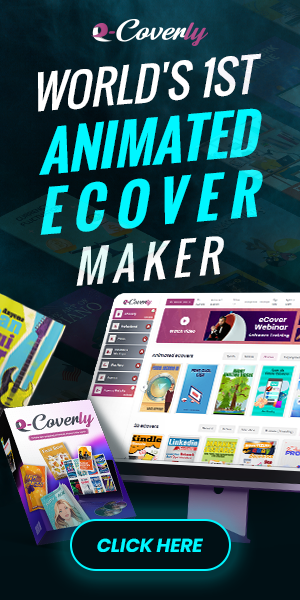Monetizing Email Campaigns: Strategies for Making Money with Email Marketing
Understanding the Basics of Email Marketing
Email marketing has become an essential tool for businesses to connect with their target audience. It is a digital marketing strategy that involves sending commercial messages to people who have opted in to receive these messages. This form of marketing helps businesses build relationships, promote their products and services, and increase brand awareness and customer engagement.
What is Email Marketing?
Email marketing is a powerful tool that allows businesses to reach their customers directly through their inboxes. It involves sending promotional messages, newsletters, and other types of content to subscribers who have opted in to receive these messages. Email marketing is a cost-effective way to promote your business, increase sales, and build brand loyalty.
Benefits of Email Marketing
Email marketing has numerous benefits that make it an effective tool for businesses. One of the primary benefits is the ability to target a specific audience. With email marketing, you can segment your email list based on demographics, interests, and behaviors, allowing you to send personalized messages that resonate with your audience.
Email marketing is also a cost-effective marketing strategy. Compared to traditional marketing methods like print ads or direct mail, email marketing is much more affordable. With email marketing, you can reach a large audience with minimal investment.
Another benefit of email marketing is that it is easy to track and measure success metrics. With email marketing software, you can track open rates, click-through rates (CTR), conversion rates, and other important metrics. This allows you to see how your campaigns are performing and make necessary adjustments to improve your results.
Personalization and customization of messages are other benefits of email marketing. With email marketing software, you can personalize your messages based on the recipient's name, location, and other relevant information. This helps to increase engagement and build stronger relationships with your customers.
Finally, email marketing can help to increase brand awareness and customer engagement. By sending regular emails to your subscribers, you can keep your brand top of mind and encourage customers to engage with your business.
Key Metrics to Measure Success
It is essential to monitor the success metrics of your email campaigns so that you can track your progress and make necessary adjustments. Some of the key metrics to measure include:
- Open Rates: This measures the percentage of subscribers who opened your email.
- Click-Through Rates (CTR): This measures the percentage of subscribers who clicked on a link within your email.
- Conversion Rates: This measures the percentage of subscribers who took a desired action, such as making a purchase or filling out a form.
- Email List Growth Rate: This measures the rate at which your email list is growing. A healthy email list growth rate is essential for the long-term success of your email marketing campaigns.
By monitoring these metrics, you can gain valuable insights into the performance of your email campaigns and make necessary adjustments to improve your results.
Building a High-Quality Email List
Having a high-quality email list is essential for any business that wants to succeed in today's digital age. Email marketing is one of the most effective ways to reach out to potential customers and keep existing ones engaged. In this article, we will discuss some strategies for building a high-quality email list that will help you grow your business.
Identifying Your Target Audience
Before you can build your email list, you need to understand your target audience. This involves defining your ideal customer's demographics, interests, and behaviors. By understanding your audience, you can create targeted email content that resonates with them and encourages engagement.
For example, if you are a fashion retailer targeting young women, you might want to create content that focuses on the latest fashion trends, beauty tips, and lifestyle advice. By doing this, you will be able to connect with your target audience on a deeper level and build a loyal following.
Creating Effective Opt-in Forms
An opt-in form is a web form that allows your website visitors to subscribe to your email list. To create effective opt-in forms, you need to keep in mind the following:
- Keep it Simple: Your opt-in form should be easy to fill out and not require too much information from the user.
- Offer an Incentive: To encourage people to sign up for your email list, offer them an incentive such as a discount or freebie.
- Highlight Benefits and Value Proposition: Make it clear what benefits subscribers will receive by signing up for your email list.
- Place Form Above the Fold: Your opt-in form should be prominently displayed on your website above the fold.
- Include Social Proof or Testimonials: Including social proof or testimonials can help build trust with potential subscribers.
Strategies for Growing Your Email List
Once you have created an opt-in form, you need to promote it to grow your email list. Some effective ways to grow your email list include:
- Offering Discounts or Freebies: Offer exclusive discounts or freebies to your email subscribers to encourage them to sign up.
- Partner with Other Businesses or Bloggers: Partnering with other businesses or bloggers in your industry can help you reach a wider audience.
- Promote Your Email List through Social Media: Use social media to promote your email list and encourage people to sign up.
- Use Pop-Ups or Slide-Ins on Your Website: Pop-ups or slide-ins can be an effective way to capture the attention of website visitors and encourage them to sign up for your email list.
- Include a Call-to-Action in Your Emails: Include a call-to-action in your emails to encourage subscribers to share your content and refer others to your email list.
By following these strategies, you can build a high-quality email list that will help you grow your business and connect with your target audience on a deeper level. Remember to always provide value to your subscribers and keep them engaged with relevant and interesting content.
Crafting Compelling Email Content
Email marketing is one of the most effective ways to reach your target audience and promote your brand. However, with so many emails flooding inboxes every day, it can be challenging to capture your subscribers' attention and stand out from the crowd. Crafting compelling email content is crucial to ensure that your emails get opened, read, and acted upon. Here are some tips to help you create email content that resonates with your subscribers:
Writing Attention-Grabbing Subject Lines
The subject line of your email is the first thing that your subscribers see, and it determines whether they will open or ignore your email. To write compelling subject lines, you need to keep it short and sweet. Long subject lines are often truncated, and subscribers may miss the most crucial part of your message. Personalizing the subject line by using your subscriber's name can also help increase open rates. Creating urgency or scarcity by using phrases such as "limited time offer" or "only a few spots left" can also entice subscribers to open your email. You can also pose a question or make a provocative statement to pique your subscriber's curiosity. Finally, using emojis or symbols can make your subject line stand out in a crowded inbox.
Personalizing Your Emails
Personalization is the key to building a relationship with your subscribers and increasing engagement. Start by using your subscriber's name in the email greeting. You can also send targeted content based on their interests or behavior. For example, if a subscriber has previously shown an interest in a particular product or service, you can send them more information about it. Segmenting your email list based on demographics, behavior, or interests can also help you send more relevant content to your subscribers.
Using Visuals and Formatting to Enhance Engagement
In addition to quality content and personalization, including visuals such as images, videos, or infographics in your email can help increase engagement and make your messages more appealing. Visuals can break up long blocks of text and make your email more visually appealing. It is also essential to format your emails properly for easy readability and better user experience. Use short paragraphs, bullet points, and subheadings to make your content easier to scan. Finally, make sure your emails are mobile-friendly, as more and more people are checking their email on their smartphones.
By implementing these tips, you can create email content that resonates with your subscribers and drives engagement. Remember to test and optimize your emails regularly to ensure that you are delivering the best possible content to your subscribers.
Monetization Strategies for Email Campaigns
Email campaigns are one of the most effective marketing tools for businesses to connect with their target audience. However, beyond just building brand awareness and driving traffic to your website, email campaigns can also serve as a source of revenue. Here are some monetization strategies you can use to make money from your email campaigns:
Affiliate Marketing through Email
Affiliate marketing involves promoting other people's or businesses' products or services and earning a commission for each sale or lead generated from your referral. Email marketing is an effective way to promote affiliate products and earn revenue. By strategically placing affiliate links within your email campaigns, you can provide value to your subscribers by recommending products or services that align with their interests and needs. This can also help you build trust and credibility with your audience as they see you as a valuable resource for recommendations and advice.
When choosing affiliate products to promote, it is important to ensure that they align with your brand and values. You should also disclose any affiliate relationships to your subscribers to maintain transparency and build trust.
Selling Your Own Products or Services
If you have your own products or services, email campaigns can be an effective way to promote and sell them directly to your subscribers. By highlighting the benefits and value of your products or services, you can encourage subscribers to make a purchase. You can also offer exclusive discounts or promotions to your email subscribers to incentivize them to buy.
When promoting your own products or services, it is important to strike a balance between promoting and providing value to your subscribers. You should aim to provide useful and relevant content in your email campaigns while also promoting your products or services in a way that feels natural and not overly salesy.
Sponsored Content and Advertisements
Another way to generate revenue from your email campaigns is by including sponsored content or advertisements. However, it is essential to ensure that the content or ads are relevant and high-quality and do not appear spammy or intrusive to your subscribers. You should also disclose any sponsored content or advertisements to your subscribers to maintain transparency.
When choosing sponsored content or advertisements to include in your email campaigns, it is important to consider your audience's interests and needs. You should only promote products or services that align with your brand and values and that you believe will provide value to your subscribers.
Offering Exclusive Content or Memberships
You can monetize your email campaigns by offering exclusive content, such as an e-book, course, or membership, that is only accessible to your subscribers. This can create a sense of exclusivity and value, which can encourage subscribers to pay for access. You can also offer tiered membership levels with different benefits and perks to incentivize subscribers to upgrade.
When creating exclusive content or memberships, it is important to ensure that they provide real value to your subscribers. You should also price them appropriately based on the value they provide and the market demand.
In conclusion, email campaigns can be a valuable source of revenue for businesses when used strategically. By implementing these monetization strategies, you can provide value to your subscribers while also generating income for your business.
Optimizing Email Campaigns for Maximum Revenue
Email marketing is a powerful tool to drive revenue for your business. However, to get the most out of your email campaigns, you need to optimize them for maximum revenue. In this article, we will explore three ways to do just that.
Segmenting Your Email List
Segmentation involves dividing your email list into specific groups based on demographics, preferences, or behavior. By sending targeted and relevant content to each group, you can improve engagement and increase conversions. For example, you can segment your list based on the products or services they have purchased in the past, their location, or their interests.
By segmenting your email list, you can personalize your messages, making them more relevant to your subscribers. This, in turn, can result in higher open rates, click-through rates, and ultimately, more revenue.
A/B Testing and Analytics
A/B testing involves sending two different versions of your email to a small group of subscribers to see which performs better. This can help you optimize your email campaigns for maximum revenue. For example, you can test different subject lines, calls to action, or email designs.
It is also essential to track and analyze the success metrics of your email campaigns to make data-driven decisions. By monitoring open rates, click-through rates, and conversion rates, you can identify what is working and what is not. This information can help you make changes to your email campaigns to improve their performance.
Automating Your Email Marketing Efforts
Automating your email campaigns can save you time and effort while also allowing you to send targeted and relevant content to your subscribers. You can automate welcome emails, abandoned cart emails, birthday or anniversary emails, and more.
By automating your email campaigns, you can ensure that your subscribers receive timely and relevant messages, without having to manually send each email. This can result in higher engagement and more revenue for your business.
In conclusion, optimizing your email campaigns for maximum revenue requires segmentation, A/B testing, and automation. By implementing these strategies, you can create targeted and personalized messages that resonate with your subscribers, resulting in higher engagement and more revenue for your business.
Legal and Ethical Considerations for Monetizing Email Campaigns
Complying with Anti-Spam Laws
It is essential to comply with anti-spam laws when sending commercial emails to your subscribers. Failure to comply with these laws can result in severe penalties, including hefty fines and even legal action. Therefore, it is crucial to familiarize yourself with the anti-spam laws that apply to your region and ensure that your email campaigns comply with them.
The CAN-SPAM Act in the US requires that your emails include an unsubscribe option, and your business information, and avoid misleading or deceptive emails. Similarly, GDPR in the EU requires that you obtain explicit consent from your subscribers before sending them any marketing emails. You must also provide them with the option to opt out of receiving further emails from you.
By complying with these laws, you not only avoid legal repercussions but also ensure that your subscribers receive relevant and valuable content that they have opted-in to receive.
Respecting User Privacy and Data Protection
Protecting your subscribers' privacy and data is essential for building trust and maintaining a positive relationship with them. You must implement security measures to prevent unauthorized access, use, or disclosure of personal data.
One way to protect user privacy is by obtaining explicit consent before collecting any personal data. This involves providing clear and transparent information on how you collect, store, and use personal data. You must also ensure that your data collection practices are in compliance with data protection laws, such as GDPR and CCPA in the US.
By respecting your subscribers' privacy and data protection, you not only comply with legal requirements but also build trust and loyalty with your subscribers.
Maintaining Trust and Transparency with Your Subscribers
Trust and transparency are critical for building a positive relationship with your subscribers. By being honest and open about your monetization strategies, you can build trust and maintain your credibility with your subscribers.
One way to maintain transparency is by disclosing sponsored content or affiliate links in your emails. This not only helps you comply with legal requirements but also helps your subscribers understand how you make money from your email campaigns.
Another way to maintain trust is by providing valuable content that meets your subscribers' needs and interests. By delivering relevant and useful content, you can establish yourself as a thought leader in your industry and build a loyal subscriber base.
In conclusion, legal and ethical considerations are essential for monetizing email campaigns. By complying with anti-spam laws, respecting user privacy and data protection, and maintaining trust and transparency with your subscribers, you can build a successful email marketing strategy that delivers value to both you and your subscribers.
Case Studies: Successful Email Monetization Examples
Email marketing has become an essential tool for businesses to reach out to their customers and generate revenue. In this article, we will look at some successful email monetization examples and the lessons we can learn from them.
How Company X Increased Revenue Through Email Marketing
Company X is a leading e-commerce store that sells a wide range of products. They wanted to increase their revenue and decided to use email marketing to achieve this goal.
They started by segmenting their email list based on their customer's interests and preferences. This allowed them to send targeted content to each segment, which improved engagement and conversions. They also used affiliate marketing to promote relevant products and services to their email subscribers, resulting in a significant increase in revenue.
Another strategy that Company X used was to optimize their emails for mobile devices. With more and more people accessing their emails on their smartphones, it was essential to ensure that their emails were mobile-friendly. This helped them to reach a wider audience and improve their click-through rates.
Lessons Learned from Company Y's Email Campaigns
Company Y is a well-known brand that offers a variety of products and services. They also used email marketing to promote their products and services to their customers.
However, they made a mistake by including sponsored content in their email campaigns without considering their subscribers' interests. This resulted in backlash from their subscribers, who felt that the content was irrelevant and spammy. Company Y learned the importance of maintaining the quality and relevance of their email content to maintain their subscribers' trust.
It is essential to remember that your subscribers have given you permission to contact them, and they expect you to provide them with valuable and relevant content. If you fail to do so, you risk losing their trust and damaging your brand's reputation.
Best Practices from Industry Leaders
Industry leaders have shared their best practices for email marketing, which can help you improve your email campaigns and generate more revenue.
Personalization is one of the most effective ways to improve your email campaigns. By segmenting your email list and sending targeted content to each segment, you can improve engagement and conversions. You can also use personalization to include your subscribers' names in the email, which can make them feel valued and appreciated.
Another best practice is to optimize your emails for mobile devices. With more and more people accessing their emails on their smartphones, it is essential to ensure that your emails are mobile-friendly. This can help you reach a wider audience and improve your click-through rates.
A clear call to action is also essential in your email campaigns. Your subscribers should know what action you want them to take after reading your email. Whether it is to visit your website, make a purchase, or sign up for a newsletter, your call to action should be clear and compelling.
Finally, it is essential to focus on building a high-quality email list. This means collecting email addresses from people who are genuinely interested in your products or services and maintaining open and honest communication with your subscribers. By doing so, you can build a loyal following and generate more revenue from your email campaigns.
In conclusion, email marketing is a powerful tool for building relationships with your subscribers and generating revenue for your business. By implementing relevant and targeted content, optimizing your email campaigns, and complying with legal and ethical guidelines, You can monetize your email campaigns effectively and generate substantial income for your business.


.webp)












